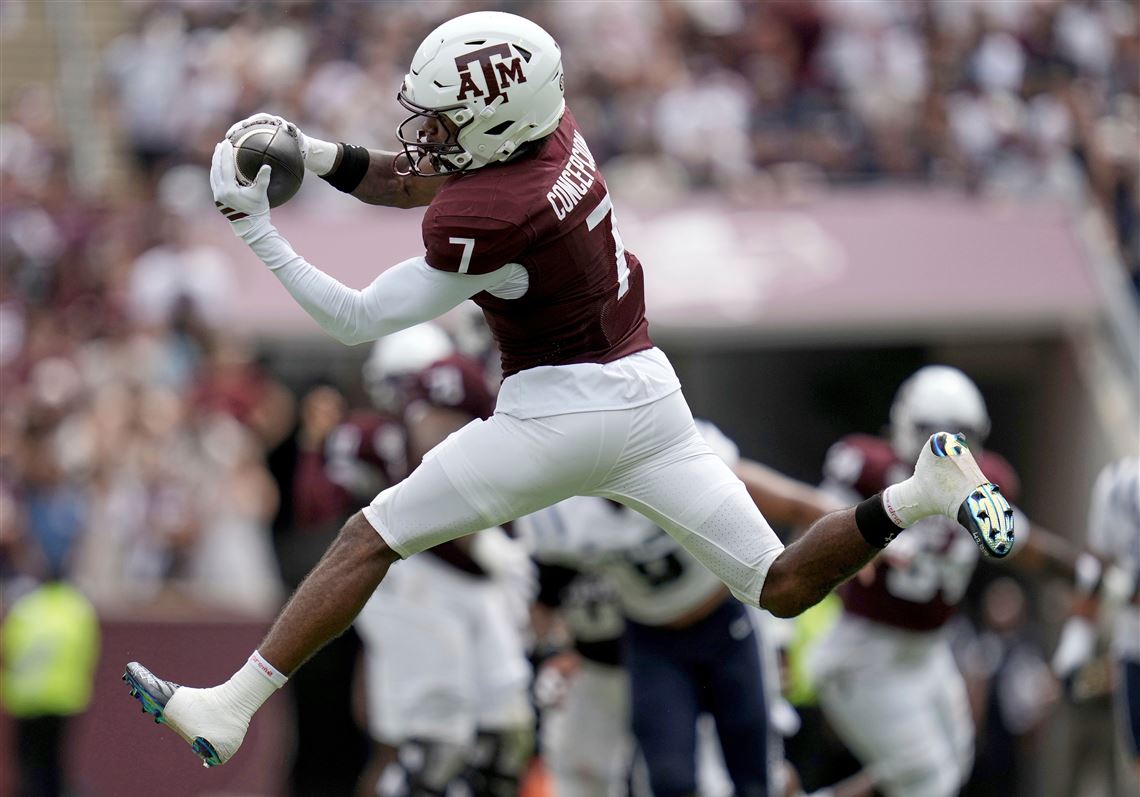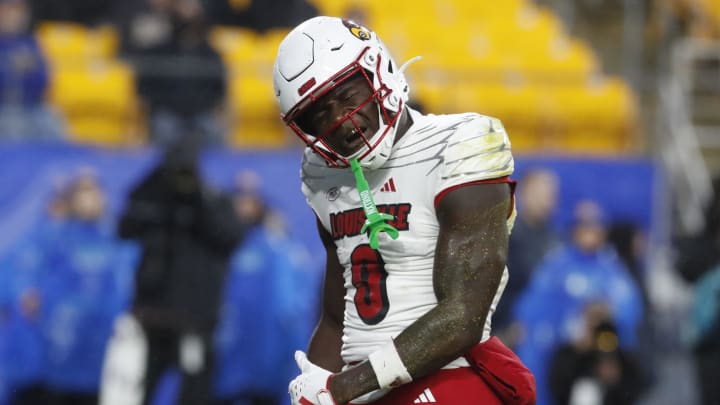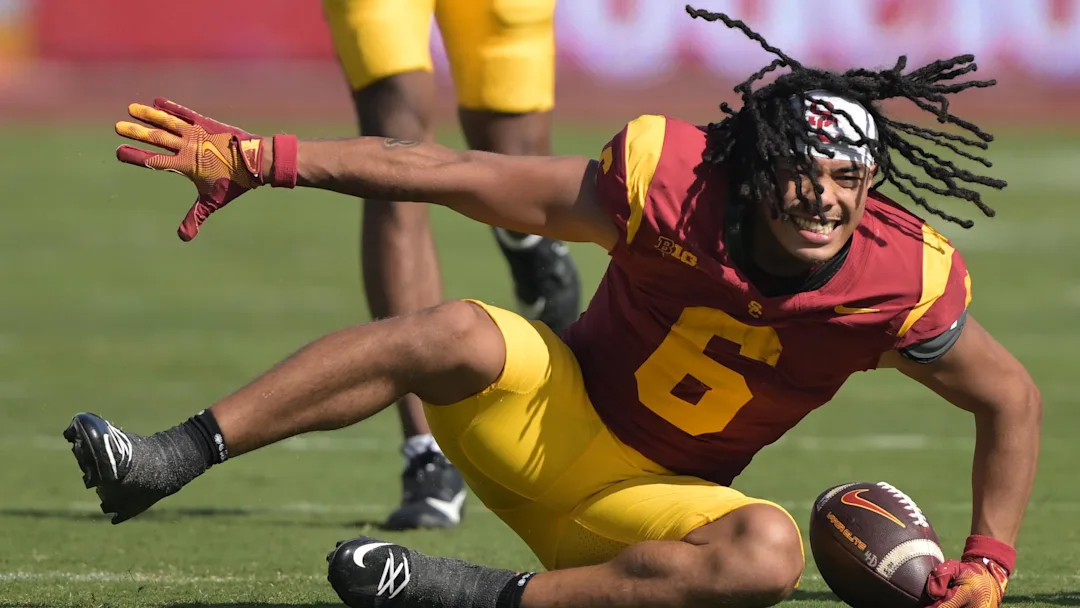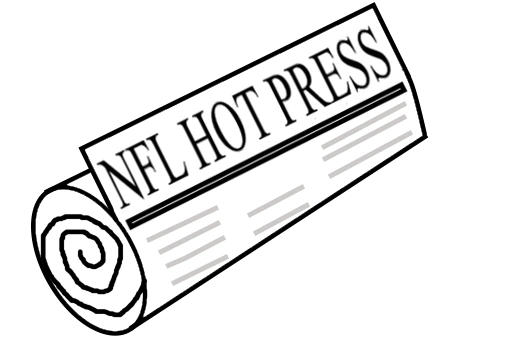By Charlie Campbell.
Send Charlie an e-mail here: [email protected]
Follow Charlie on Twitter @draftcampbell for updates.
This page was last updated April 13, 2020. Follow me @walterfootball for updates.
Tight End Class
Early-round talent: D
Mid-round: C
Late-round: D
Overall grade: D+
2020 prospects vs 2019
T.J. Hockenson
Noah Fant
Irv Smith Jr.
Adam Trautman
Drew Sample
Josh Oliver
Jace Sternberger
Kahale Warring
Dawson Knox
Cole Kmet
Thaddeus Moss
Colby Parkinson
Albert Okwuegbunam
Jared Pinkney
Hunter Bryant
Stephen Sullivan
The 2017 draft class was a great class of tight ends that received a rare A+ from me. 2018 was a let-down, but last year, there were some good early-round talents and team sources told me they liked the depth of tight ends for the mid-rounds and Day 3 of the draft. This year’s class of tight ends is very poor. Some teams have only one tight end with a grade in the first three rounds of the 2020 NFL Draft. There is a large group of tight ends for Day 3, but a lot of them fall into the “just a guy” category and will have a hard time sticking in the NFL. Teams that need tight end help are going to have a hard time finding a good contributor from this rookie class.
If you were to merge the two classes, it would look pretty ugly for the 2020 players. The best tight end this year, Adam Trautman, would be a second-round-caliber player last year, similar to Drew Sample. Cole Kmet and Thaddeus Moss could be third-rounders, but they are not as good of prospects as Knox or Warring. However, there are two exceptions to the 2020 group. The physically gifted Albert Okwuegbunam would be an early-round pick if he didn’t have serious off-the-field concerns. Stephen Sullivan also has an early-round skill set, but teams are concerned about him being able to learn their offenses, which will likely send him to Day 3.
Safest Pick: Adam Trautman, Dayton

Previous Picks:
2019: T.J. Hockenson
2018: Hayden Hurst
2017: O.J. Howard
2016: Hunter Henry
2015: Clive Walford
2014: Eric Ebron
2013: Zach Ertz
My track record here is decent. Hockenson was a big disappointment in 2019 with meager production in a dozen games as a rookie, but he still has plenty of time to turn things around. Hurst fell behind Mark Andrews in Baltimore, but Hurst definitely could turn into a good pro in Atlanta. Howard is a good player when healthy, although he has not always been utilized.
Henry has been solid and landed the franchise tag. Walford is the one big blemish thus far since he didn’t stick with Oakland. Ebron was a disappointment as a top-10 pick for Detroit, but he has turned into a dangerous mismatch receiving tight end. Ertz is one of the better tight ends in the NFL.
This was an easy selection, not because Trautman is elite, but because the rest of the tight ends are so unimpressive. Still, Trautman is a good football player. Trautman is a good receiving tight end who has the ability to be a productive contributor to a passing attack. While he has room to improve as a blocker, Trautman has the size and potential to be serviceable in blocking. He could turn into a three-down starter in the NFL, and some team sources have compared him to Austin Hooper.
Biggest Bust Potential: Hunter Bryant, Washington

Previous Picks:
2019: Noah Fant
2018: Jordan Akins
2017: Adam Shaheen
2016: Nick Vannett
2015: Nick O’Leary
2014: Jace Amaro
2013: Gavin Escobar
My track record here is pretty good. One can’t pass judgement on Fant yet. Akins disappointed thus far, but he has time to reverse that. Shaheen flashed as a rookie, but he has struggled since. Vannett hasn’t impressed. O’Leary was a sixth-round pick, so you can’t say he is a true bust even though he didn’t stick with the Bills. Amaro was a bust for the Jets, and Escobar was a bust as a second-round pick for Dallas, never coming close to his draft slot, so I was right on those two.
Bryant gotten a lot of media hype, so some team might take him higher than where he should go as he has issues for the NFL. At 6-foot-2, 248 pounds, Bryant is very undersized to play tight end in the pros while also not being very fast to make up for the lack of size. I could see Bryant not translating to the next level because of the size and speed limitations.
Tight End Rankings by Attributes
Pass Receiving:
NFL prototype: Travis Kelce, Chiefs
- Albert Okwuegbunam
- Stephen Sullivan
- Adam Trautman
- Thaddeus Moss
- Hunter Bryant
- Cole Kmet
- Colby Parkinson
- Jared Pinkney
Recap: The NFL has evolved to the point where tight ends are a critical part of a potent passing attack. Some teams have better receiving weapons at tight end than they do at receiver. The league is driven by passing, so if a tight end can’t contribute as a receiver, he could have a hard time seeing the field. The 2020 NFL Draft has some tight ends who can do damage as receivers.
Okwuegbunam is the top receiving tight end for the 2020 NFL Draft. As a receiver, Okwuegbunam is dynamic. He is fast to get down the seam and has size to wall off defenders or make catches over them when they were able to keep him from getting separation. Thus, Okwuegbunam is very difficult to cover, as safeties will struggle with his size while some safeties and linebackers will have a hard time running with him because of his elite speed. Okwuegbunam runs quality routes and is adept at finding the soft spot in zone coverage. He tracks the ball well and shows impressive hands to snatch passes out of the air. With his soft hands, Okwuegbunam does not have to body catch and is very calm to make receptions with defenders closing in on him. He has the skill set to be a superb receiving tight end.
Sullivan has the potential to be a mismatch receiving tight end who produces some big plays for his offense in the passing game. He is a good route-runner with speed, athleticism and feel. He is too fast for linebackers to run with, and he has enough size to make catches over defensive backs. Sullivan tracks the ball well downfield and shows late hands to make the catch even when defenders are close. With his speed and athleticism, Sullivan is dangerous with the ball in his hands. He has a great skill set to be a receiving tight end, but knowing the plays, audibles, and checks limits how much he can play and be effective.
Trautman has the potential to be a dangerous receiving tight end who contributes well to a NFL passing attack. He has a well-rounded set of tools as a receiver to beat defenses in a variety of ways. Trautman has mismatch size and is very adept at going up to make contested catches over defenders. He high points the ball well and has strong hands to control the ball while getting hit. Trautman has a nose for the end zone and should be an asset in the red zone, as he was very good at producing touchdowns in college. On top of good hands, Trautman has good feel as a route-runner and knows how to separate. He gets open running down the seam, on crossing routes, and underneath. While Trautman does not have elite speed or athleticism, he is effective and is a pure football player.
Moss and Bryant are potential receiving tight ends in the mold of Jordan Reed. Both of them are smooth route-runners with some shiftiness and natural receiving ability. While Moss (6-2, 250) is not big, he does a nice job of using his body to make contested catches. Both Moss and Bryant could be F movement tight ends who contribute as receivers, but there physical limitations could limit how much they are able to play.
Team sources call Kmet a big tight end with the body of a Y – blocking – tight end. They say he is a typical Y athlete and not special in the passing game. He will make the occasional play as an underneath receiver, but will struggle to separate in the NFL because he lacks the speed to be a true receiving threat. Kmet has good hands and presents a big target for his quarterback while providing a size mismatch against safeties in man coverage.
Parkinson presents a size mismatch as the 6-foot-7 tight end is difficult to defend on jump balls, but he does not run that well, so separating will be an issue for him in the NFL. Pinkney is similar. Team sources say Pinkney has pretty good hands but no speed or explosiveness as a receiver. He struggles to separate underneath and doesn’t have the speed to be a vertical threat up the seam.
Blocking:
NFL prototype: Marcedes Lewis, Packers
- Jared Pinkney
- Colby Parkinson
- Cole Kmet
- Adam Trautman
- Stephen Sullivan
- Albert Okwuegbunam
- Thaddeus Moss
- Hunter Bryant
Recap: Blocking ability is still important for NFL tight ends; not just in the ground game, but in pass protection. Teams like their tight ends to have the ability to help tackles when they’re going against an elite edge rusher.
As a blocker, Pinkneuy is a quality contributor. He has quality size, strength, technique, and a willing attitude. He was a steady blocker for Vanderbilt over the past two seasons and could contribute at the pro level.
Parkinson is a big tight end who can contribute and slow up defenders at the point of attack. He could develop into a nice Y tight end in the NFL who is a reliable blocker.
As a blocker, sources say Kmet is not a killer in the run game and needs to improve. They feel he is better than other tight end prospects, but they don’t see as good of a blocker as his 6-foot-6, 262-pound frame would suggest.
Trautman has room for improvement as a blocker for the NFL. He has the size to be effective, but he needs to get more physical and lacks desire as a to block. NFL coaching could help him to get better with his technique and definitely could employ the motivational tools for Trautman to get a more aggressive demeanor.
Sullivan has the size and strength to contribute as a blocker. If he were more assignment sound, he could be higher.
Okwuegbunam is not a good blocker and needs to improve his ability. He has the size to do it, but little desire. If he just improved his attitude, it would help him to improve his blocking because he has the size to do. Not having the desire to block is a big negative with Okwuegbunam.
The bottom duo are weak blockers for the NFL. Moss and Bryant do not have the size to really be effective blockers in the NFL. Thus, they will never be forces in the ground game.
Red Zone:
NFL prototype: Antonio Gates, Retired
- Adam Trautman
- Albert Okwuegbunam
- Colby Parkinson
- Cole Kmet
- Thaddeus Moss
- Jared Pinkney
- Stephen Sullivan
- Hunter Bryant
Recap: Tight ends are critical players in the red zone. Multiple tight ends are needed for goal-line packages. Many teams also like to use double-tight end sets inside the 20-yard line. A tight end who is a big target with sure hands and leaping ability is a good weapon to help produce touchdowns instead of field goals.
Trautman has the most red-zone potential of this group, as he will be a valuable weapon to help produce points for his offense. There is no doubt that his NFL team is going to have him as a main-stay in the red zone because he has real nose for pay dirt. He had 14 touchdowns last year, nine in 2018 and five as a sophomore. Trautman high points the ball well and is dangerous on jump balls. He also is skilled at knowing how to get open while presenting a good target. As a pro, Trautman should be a good red-zone contributor.
Okwuegbunam scored 23 touchdowns over the past three seasons and was a dynamic red-zone player for Missouri. He can make catches over defenders and has the speed to break open. He could present a dangerous red-zone mismatch problem in the NFL.
Parkinson had only one score last year, but he is a big tight end who is a red-zone mismatch. His previous seasons illustrated that, as he had seven touchdowns in 2018 and four in 2017. Kmet also showed a knack to score, notching six touchdowns in 2019. Both Parkinson and Kmet have mismatch size while being secure receivers.
Sullivan has mismatch size and speed, but if he can be assignment-sound enough to play in the red zone is the question. Moss and Pinkney could be decent red-zone weapons in the passing game. They don’t have mismatch issues, but both of them could contribute. Bryant is undersized and probably will only play in obvious passing situations in the red zone because he doesn’t offer enough as a blocker to be in on goal-line sets.
Hands:
NFL prototype: Jason Witten, Raiders
- Adam Trautman
- Cole Kmet
- Albert Okwuegbunam
- Colby Parkinson
- Jared Pinkney
- Hunter Bryant
- Thaddeus Moss
- Stephen Sullivan
Recap: Tight ends with bad hands don’t get thrown the ball often in the NFL. They have a hard time seeing the field and end up only playing in goal-line situations and on special teams. In the group above, there isn’t a player that I would say has bad hands.
Trautman and Kmet have the best hands of this group. I think Trautman is the most sure-handed overall. Okwuegbunam has really soft hands and is a natural hands catcher. Parkinson, Pinkney, Bryant and Moss were reliable in college. Once in awhile, you would see a drop from some of them. Sullivan didn’t look bad but has some mental lapses.
H-Back:
NFL prototype: Charles Clay, Free Agent
- Thaddeus Moss
- Hunter Bryant
- Stephen Sullivan
- Jared Pinkney
- Albert Okwuegbunam
- Adam Trautman
- Cole Kmet
- Colby Parkinson
Recap: Many offensive coordinators like tight ends with the flexibility to line up as an h-back. That allows them to set up more mismatches and align blocking schemes differently. Not all tight ends have the athletic ability and quickness to pull off h-back responsibilities. Aaron Hernandez was superb at it for New England and was the prototype a few years ago. Charles Clay is the best now.
Moss projects as the best h-back tight ends of this group, and he was moved around at LSU. He has the build to go with with quickness and athleticism as a h-back. Bryant is similar, and he could work out of the h-back and provide mismatches in that role with one-on-one routes versus linebackers. Sullivan would be a big h-back, but he has the quickness and athletic ability to execute.
Okwuegbunam, Trautman, Kmet and Parkinson don’t look like fits for h-back.
Yards After Catch:
NFL prototype: Ron Gronkowski, Retired
- Adam Trautman
- Stephen Sullivan
- Thaddeus Moss
- Albert Okwuegbunam
- Cole Kmet
- Hunter Bryant
- Colby Parkinson
- Jared Pinkney
Recap: There are some tight ends in the NFL who are very dangerous with the ball in their hands. Having the ability to pick up yards after the catch – YAC – is not an easy trait to find in tight ends. This class has some amazing YAC tight ends.
Trautman is dangerous after the catch. He runs through tackles and gets yards after contact downfield. He also has a burst to run away from tacklers and bolt downfield. In the open field, Trautman will power through defensive backs, but he may want to be careful about doing that in NFL because as it puts his body in a vulnerable state. Trautman has the potential to be a good YAC receiving tight end at the next level.
With their quickness and athleticism, Sullivan and Moss are dangerous with the ball in his hands to rip off more yardage after the catch. They both showed that on some gains for LSU last year. Moss is more of a one-speed player, so that puts him behind the top two.
Okwuegbunam is a good athlete with quickness to get YAC. He is not dominantly physical like some other receiving tight ends, but he is a big body for defensive backs to get down. He is not a big tackle breaker, but he uses his feet to get more yardage prior to getting tackled.
Kmet is a physical runner who can break some tackles, but he is not quick, so defenders will chase him down easily. Bryant, Parkinson and Pinkney won’t be big YAC receivers in the NFL. Bryant does not have the size to break tackles and is not fast. Parkinson and Pinkney are similar to Kmet as they don’t run that well.
NFL Picks - Dec. 28
2026 NFL Mock Draft - Dec. 24
NFL Power Rankings - Dec. 23
Fantasy Football Rankings - Sept. 1




